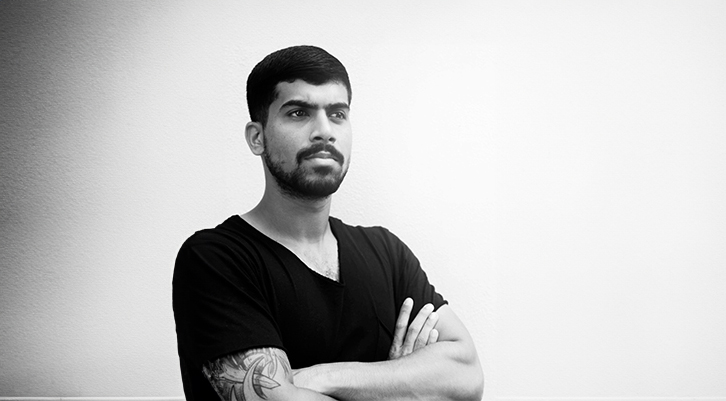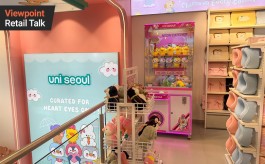On the growing need for frugality, tech as a double-edged sword & more…
By Niranjan Talekar | May 23, 2024
Navath Rahin, Head Designer at Ahanas Design for Space, shares his insights on market trends, client expectations, the increasing need to balance innovative design and ROI, and more, in this exclusive conversation as part of our ‘Business of Design’ series.

Most retail designers agree that retail market in India has made a marked come-back post-Covid. But has it changed the way their retail clients are looking at their store design and experience strategies? May be…
Navath Rahin, Head Designer at Ahanas Design for Space, says, in this exclusive conversation with Retail4Growth as part of our ‘Business of Design’ series, "The retail market is making a strong comeback to physical stores post-COVID." He cites the example of one of his projects for a traditional jeweller in Madurai who has opened 1,000-square-foot boutique focusing on limited, exclusive collections, catering to a young, modern clientele that values unique, high-quality pieces. Such projects exemplify the blend of tradition and modernity, a hallmark of Navath's design philosophy. He also cites the expansion plans of a major client aiming to open 30 new stores. Indeed, as he points out, the post-COVID era has seen a renewed focus on physical retail spaces, as brands recognise the irreplaceable value of a well-designed store in enhancing brand identity and customer engagement.
This optimism however is tempered by the practical challenges of maintaining quality and innovation under budget constraints.
Client Expectations and ROI Pressures
Navath particularly emphasises the focus on time and budget constraints in the industry. "While, retail clients have always focused on timing and budgeting due to their rental agreements and business timelines, today there is a growing demand for designers to demonstrate clear ROI, and retailers are increasingly concerned with the long-term value of their investments. This focus necessitates innovative design solutions that not only meet aesthetic and functional requirements, but also enhance profitability.”
Trends in Store Design Spending
When it comes to spending, Navath observes a general increase in budgets, though driven primarily by rising material costs. He adds, "Clients are still very budget-conscious, even in high-end segments like diamond boutiques," he notes. This frugality requires designers to be more strategic, opting for durable and maintenance-free materials that offer long-term value. Navath's preference for materials like micro-topping over traditional tiles exemplifies this approach, balancing initial costs with future savings.
Tech as a Double Edged Sword?
The integration of front tech—such as interactive displays and advanced lighting systems— - is also a critical factor today in defining the deliverability of store design. It however poses both challenges and opportunities. Navath in fact sees it as a double-edged sword. "Front tech can be a challenge due to the technical complexities involved, but it also offers exciting opportunities to create more engaging and adaptive retail environments," he says. For example, dynamic visual displays can transform a store's ambience and keep it aligned with current trends without significant physical alterations. This flexibility is crucial in maintaining a fresh and relevant shopping experience.
Working around limited spaces
One of the other significant challenges in retail design today, according to Navath, is creating seamless, expansive spaces, within limited square footage. "Space is a luxury," he asserts. To achieve this, he often employs materials and design techniques that enhance the perception of volume and fluidity. The goal is to make even small stores feel spacious and welcoming, a critical factor in creating a positive customer experience.
Staying Updated with Trends
In an industry characterised by rapid changes, staying informed about the latest trends and technologies is also crucial. Navath emphasises the importance of observation and continuous learning. "Whether through mindlessly scrolling through social media or attending industry expos, keeping an eye out for new ideas is essential," he advises. This proactive approach ensures that designers can incorporate the latest innovations into their work, maintaining a competitive edge.
The Role of Collaboration
Collaboration is another important factor for the success of retail design as a whole. Navath highlights the importance of working with specialists, particularly lighting designers, to achieve the desired ambience and functionality. "Lighting can make or break a retail space," he explains. By integrating expertise from various fields, Navath's team addresses the nuanced demands of different retail environments, from jewellery stores requiring precise lighting, to textiles that need careful illumination to avoid damage.
Well, as the retail design industry continues to grow, the focus on collaboration, ROI-driven design strategies, integrating advanced technologies, and maintaining timeless design principles will be key to shaping the future of retail spaces in India, as is evident in Navath’s approach to his work.




_140_270.jpg)
_140_270.jpg)



Comments